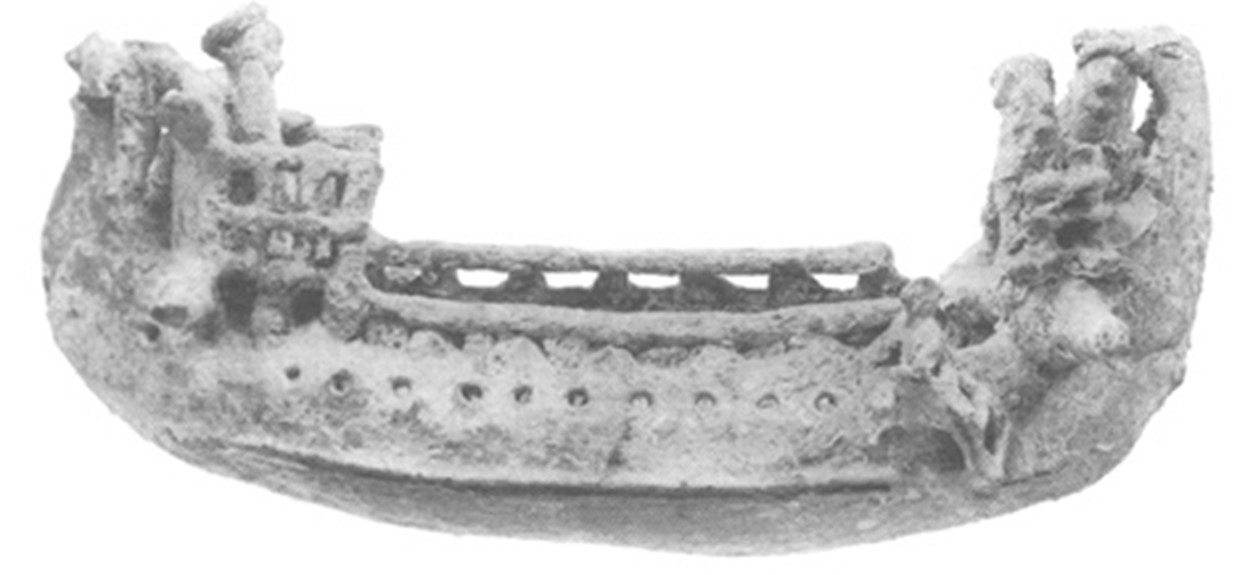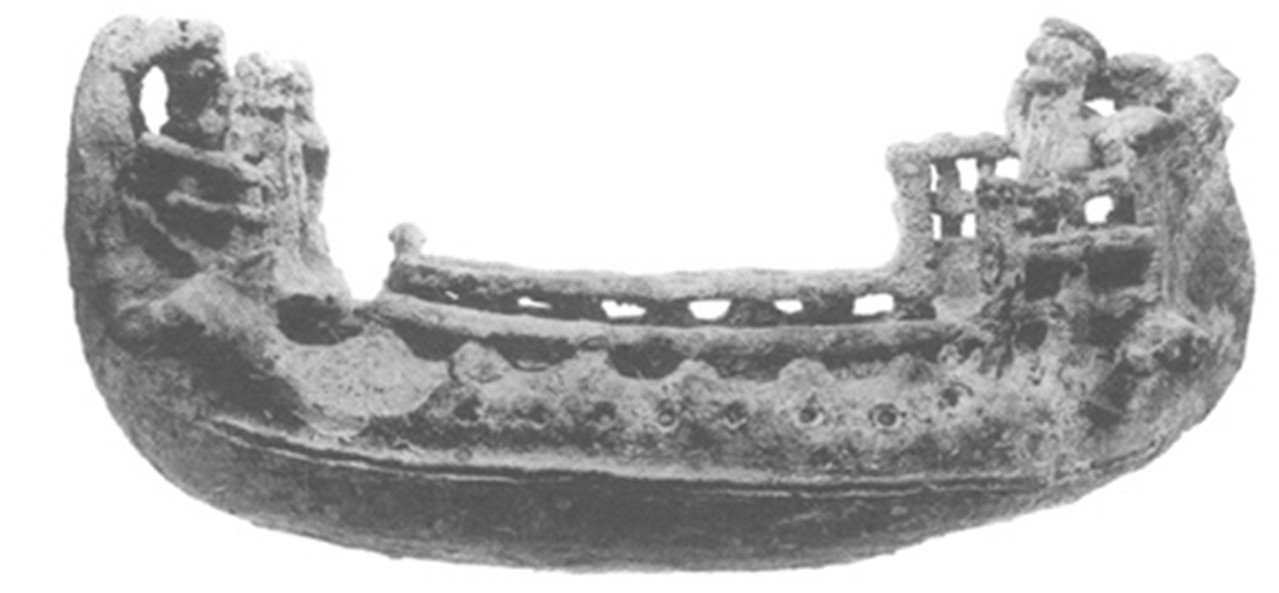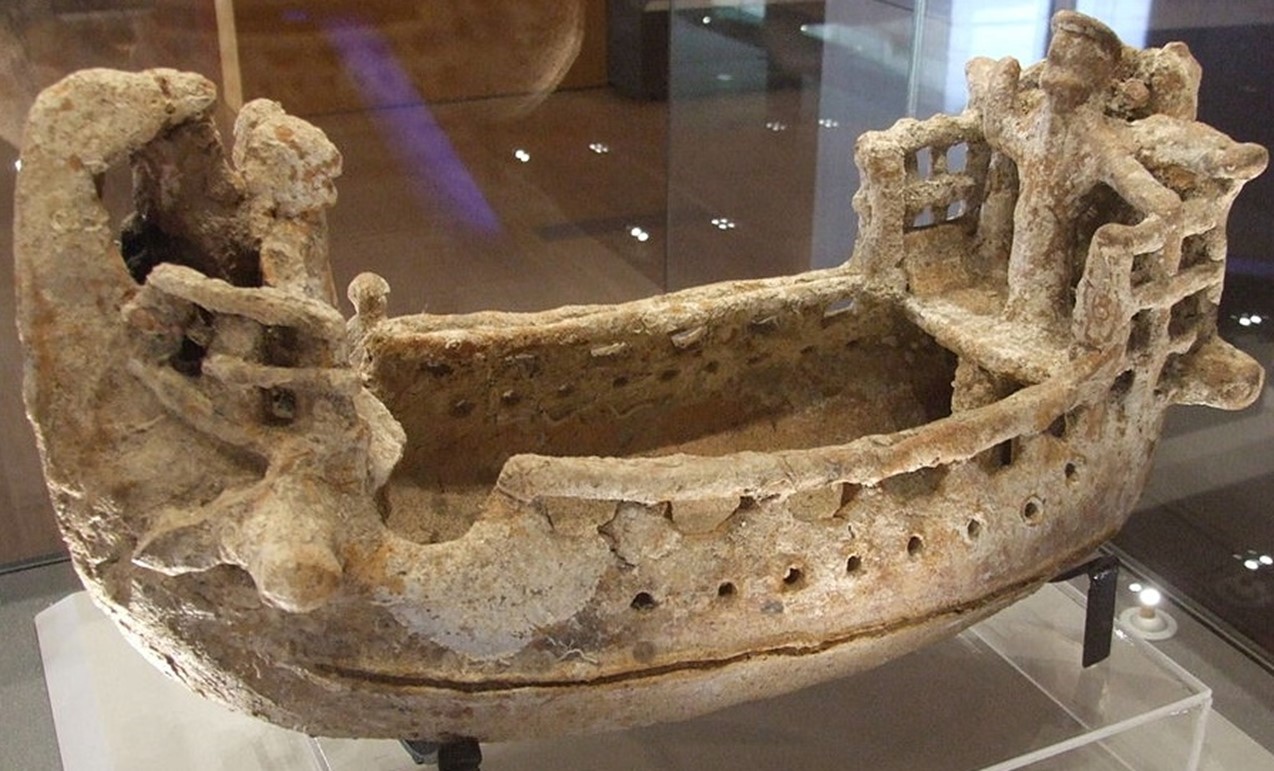Crescentic hull with a pronounced tumble-home and more or less symmetrical posts when viewed in profile. At a closer look however there are some observable differences, notably that the stern section is slightly convex, whereas the bow is slimmer. The stempost rises near vertically with a slight incurve towards its extremity, which terminates in an outward-facing device that has been identified as a griffin protome. It has a gaping mouth and ball on the top of its head, a type well-attested from bronze cauldrons. The absence of ears is understandable given that their rendition would have been near impossible on this scale. The stern rises vertically and ends in an inward facing bird-headed device, as seen on Cypriot ship depictions on pictorial pottery. The forecastle and aftertaste have raised decks supported on a single central stanchion as well as latticed railing on either side. At about 1/3 from the keel line on either side of the hull is a horizontal feature that runs from post to post. It is moulded in relief on the port side and incised on the starboard. The position of this wale seems to correspond to the ship's waterline. Above it on either side is a row of ten evenly spaced pierced holes which represent scuppers. The uppermost lateral element is a railing or open bulwark, formed by a double horizontal plank (K-K') supported by vertical stanchions.
There are three elements projecting perpendicularly from the hull, two at the bow (X-X' and Y-Y') and one at the stern (Z-Z'). X-X' is a cross-beam resting on top of the forescatle's railing and protruding slightly on either side. Its extremities have a small vertically pierced hole, which Basch has interpreted as the point of attachment of the stays - one at port and starboard respectively. Below this cross-beam at the level of the gunwale are though-beams which protrude from the hull planking on either side (Y-Y'). These should be interpreted as catheads, as further indicated by the orifice in the hull at gunwale level beside them, which served to pass the anchor's cable. On either side of the stern near the catheads is a short oblique plank which has been identified as an access ramp. Another pair of through-beams is found at the stern (Z-Z'). These served as support for the quarter rudders on either side. The vessel lacks a longitudinal deck. There is a raised circular mast-socket amidships. Near it is a small cylindrical vertical projection that remains difficult to interpret. The figure climbing aboard the ship (no. 7) from the side is using a rope ladder. The general aspect is that of a merchant vessel. It is by far the most detailed extant Cypriot ship model, both in terms of the ship's technical details and the narrative scene included.










